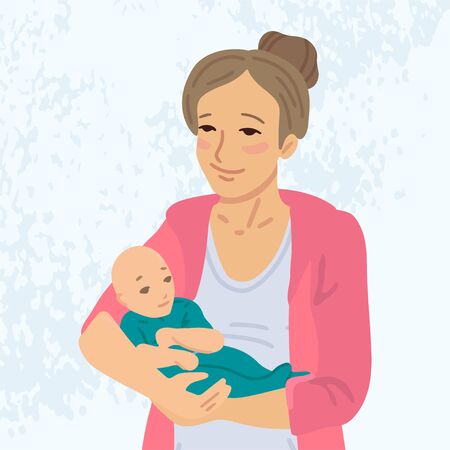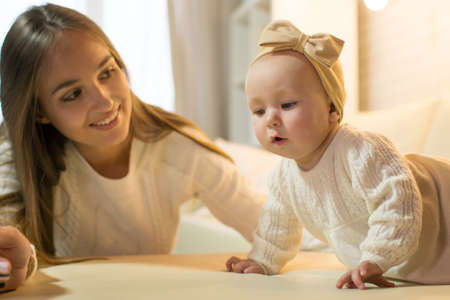1. Understanding Environmental Toxins and Their Sources
During pregnancy, exposure to environmental toxins can pose risks to both the mother and the developing baby. These toxins are found in everyday items, from the air we breathe to the food we eat. Understanding these harmful substances and their common sources can help expectant mothers take steps to minimize exposure.
Common Environmental Toxins
Several environmental toxins are known to have adverse effects on pregnancy. Below is an overview of some of the most common ones:
| Toxin | Sources | Potential Risks |
|---|---|---|
| Pesticides | Fruits, vegetables, household pest control products | May impact fetal development and increase risk of birth defects |
| Heavy Metals (Lead, Mercury) | Contaminated water, old paint, certain seafood | Can affect brain development and cause neurological issues |
| Air Pollutants | Vehicle emissions, industrial areas, secondhand smoke | Linked to low birth weight and respiratory problems |
| BPA (Bisphenol A) | Plastic containers, canned foods, receipts | May disrupt hormone levels and affect fetal growth |
| Phthalates | Personal care products, scented candles, plastic packaging | Possible link to developmental delays and hormonal imbalances |
Where These Toxins Are Commonly Found
Pesticides in Food and Household Products
Pesticides are widely used in agriculture to protect crops from pests. However, residues can remain on fruits and vegetables. Additionally, household insect sprays and lawn treatments may contain harmful chemicals that pregnant women should avoid.
Heavy Metals in Water and Seafood
Lead can be found in older homes with lead-based paint or contaminated drinking water. Mercury is commonly present in certain types of seafood, such as tuna and swordfish. High levels of mercury exposure during pregnancy can harm a baby’s developing nervous system.
Air Pollution from Everyday Exposure
Pregnant women living in urban areas or near highways may be exposed to higher levels of air pollution from vehicle emissions. Smoke from cigarettes or industrial pollutants can also contribute to respiratory issues for both mother and baby.
BPA and Phthalates in Consumer Products
BPA is commonly found in plastic food containers and canned goods lining, while phthalates are often used in cosmetics, shampoos, and perfumes. Both chemicals have been linked to potential hormonal disruptions that could impact pregnancy.
Taking Steps to Reduce Exposure
Avoiding environmental toxins starts with making informed choices about food, household products, and daily habits. In the next section, we will explore practical ways to reduce exposure and create a healthier environment for both mom and baby.
2. How Environmental Toxins Affect Pregnancy
During pregnancy, a mother’s body works hard to provide a safe and healthy environment for her growing baby. However, exposure to environmental toxins can interfere with this process, leading to potential health risks for both the mother and the baby. Understanding how these toxins affect pregnancy can help expecting parents take the necessary precautions.
Developmental Issues
Exposure to harmful chemicals during pregnancy can disrupt fetal development. Certain toxins can interfere with brain growth, leading to cognitive and behavioral issues later in life. For example, high levels of mercury found in certain fish have been linked to learning disabilities and developmental delays in children.
Birth Defects
Some environmental toxins have been associated with an increased risk of birth defects. Substances such as pesticides, lead, and certain industrial chemicals can impact organ formation during early pregnancy. This may lead to congenital disabilities affecting the heart, brain, or other vital organs.
Pregnancy Complications
Toxin exposure can also contribute to complications during pregnancy. Some chemicals can increase the risk of miscarriage, preterm birth, or low birth weight. In addition, prolonged exposure to air pollution has been linked to high blood pressure in pregnant women, which can lead to conditions like preeclampsia.
Common Environmental Toxins and Their Effects
| Toxin | Potential Risks | Common Sources |
|---|---|---|
| Mercury | Cognitive delays, neurological damage | Certain fish (shark, swordfish, king mackerel) |
| Pesticides | Birth defects, developmental issues | Fruits and vegetables treated with pesticides |
| Lead | Poor fetal growth, premature birth | Old paint, contaminated water pipes |
| BPA (Bisphenol A) | Hormonal disruptions, potential fertility issues | Canned foods, plastic containers |
| Air Pollution | Preeclampsia, low birth weight | Vehicle emissions, industrial areas |
The Importance of Awareness and Prevention
Avoiding harmful toxins during pregnancy is crucial for a baby’s healthy development. By being aware of common sources of exposure and making informed choices about food, household products, and daily habits, expecting parents can reduce risks and create a safer environment for their child.

3. Everyday Products That May Contain Harmful Toxins
Many common household items, personal care products, and even certain foods may contain harmful toxins that could pose risks during pregnancy. Identifying and avoiding these substances can help create a safer environment for both the parent and the developing baby.
Household Items to Watch Out For
Many cleaning supplies, furniture, and plastics contain chemicals that may be harmful if inhaled or absorbed through the skin. Below are some everyday household items to be cautious about:
| Item | Potential Toxins | Safer Alternatives |
|---|---|---|
| Non-stick cookware | PFOA, PTFE (linked to hormone disruption) | Ceramic, stainless steel, cast iron |
| Air fresheners & candles | Phthalates, formaldehyde | Essential oil diffusers, soy or beeswax candles |
| Chemical-based cleaners | BPA, ammonia, chlorine | Vinegar, baking soda, plant-based cleaners |
| Plastic containers & bottles | BPA, phthalates | Glass or stainless steel containers |
Toxins in Personal Care Products
The beauty and skincare industry often uses chemicals that may have adverse effects on pregnancy. Here are some ingredients to avoid in personal care products:
- Parabens: Found in lotions, shampoos, and cosmetics; linked to hormone disruption.
- Synthetic Fragrances: Present in perfumes and deodorants; may contain hidden chemicals like phthalates.
- Sulfates (SLS & SLES): Common in shampoos and body washes; can cause skin irritation.
- Toluene & Formaldehyde: Found in nail polishes and hair treatments; potentially harmful to fetal development.
Tip: Look for products labeled “fragrance-free,” “paraben-free,” or “made with natural ingredients” to minimize exposure.
Avoiding Contaminants in Food
Certain food contaminants can also pose a risk during pregnancy. Here are some common sources of toxins in food and how to reduce exposure:
| Toxin Source | Potential Risk | Avoidance Tips |
|---|---|---|
| Methylmercury (found in fish) | Affects fetal brain development | Avoid high-mercury fish like shark, swordfish; opt for salmon or sardines instead. |
| Pesticides (found in non-organic produce) | Prenatal exposure linked to developmental issues | Select organic fruits and vegetables when possible; wash produce thoroughly. |
| BPA (in canned foods & plastic packaging) | Mimics estrogen and disrupts hormones | Avoid canned goods with BPA lining; use glass storage containers. |
Create a Safer Environment for Pregnancy
Avoiding environmental toxins doesn’t mean eliminating everything from your home—small changes can make a big difference. Switch to natural cleaning products, choose safer personal care options, and be mindful of food sources. By making informed choices, you can help protect both yourself and your baby from unnecessary toxic exposure.
4. Steps to Minimize Exposure to Environmental Toxins
Reducing exposure to environmental toxins during pregnancy is essential for the health of both mom and baby. By making small, intentional changes in your daily routine, you can significantly lower the risk of harmful chemicals affecting your pregnancy. Below are practical steps to help minimize toxin exposure.
Choose Organic and Whole Foods
Pesticides and chemicals used in conventional farming can be harmful during pregnancy. Opting for organic foods whenever possible helps reduce exposure to these toxins.
| Food Category | Best Choices |
|---|---|
| Fruits & Vegetables | Choose organic options, especially for items on the “Dirty Dozen” list. |
| Dairy & Meat | Select organic, grass-fed, or hormone-free products. |
| Grains & Legumes | Avoid processed grains; opt for whole, organic grains when possible. |
Use Non-Toxic Cleaning Products
Many household cleaners contain harsh chemicals that may impact pregnancy. Switching to non-toxic alternatives can make a big difference.
- DIY Cleaners: Use natural ingredients like vinegar, baking soda, and lemon juice for effective cleaning.
- ECO-Friendly Brands: Look for cleaning products labeled as non-toxic, fragrance-free, and biodegradable.
- Avoid Harsh Chemicals: Steer clear of ammonia, bleach, and artificial fragrances in household cleaners.
Improve Indoor Air Quality
The air inside your home can contain pollutants from dust, mold, and household chemicals. Taking steps to improve indoor air quality ensures a healthier environment.
Tips for Cleaner Indoor Air:
- Add Air-Purifying Plants: Certain plants like spider plants and peace lilies help remove toxins from the air.
- Avoid Synthetic Fragrances: Use essential oils or fragrance-free products instead of air fresheners and scented candles.
- Keeps Windows Open: Ventilate your home regularly to let fresh air circulate.
- Use an Air Purifier: A HEPA-filter air purifier can help eliminate airborne pollutants.
Avoid Plastics and Harmful Chemicals
Certain plastics contain BPA and phthalates, which can disrupt hormones. Reducing plastic use can lower exposure to these harmful substances.
- Switch to Glass or Stainless Steel: Use glass or stainless steel containers for food storage instead of plastic.
- Avoid Heating Plastic: Never microwave food in plastic containers, as heat can release harmful chemicals into food.
- Select BPA-Free Products: Choose BPA-free water bottles, baby products, and food packaging whenever possible.
Taking these steps can help create a safer environment for both you and your growing baby. Making mindful choices about the products you use and the food you eat will contribute to a healthier pregnancy journey.
5. Advocating for a Healthier Environment in Pregnancy
Protecting yourself and your baby from environmental toxins isn’t just about personal choices—it’s also about advocating for broader changes in policies, workplaces, and communities. By taking proactive steps, expecting parents can help create a healthier world for themselves and future generations.
Understanding the Power of Advocacy
Advocacy means using your voice to bring attention to important issues and push for change. Whether it’s supporting policies that limit harmful chemicals or ensuring safer workplace environments, small actions can lead to significant improvements.
How You Can Advocate for a Safer Environment
1. Supporting Stronger Environmental Policies
Government regulations play a huge role in limiting exposure to harmful substances. Expecting parents can:
- Stay informed about proposed laws related to environmental safety.
- Support organizations that fight for cleaner air, water, and food.
- Contact local representatives to express concerns about pollution and toxins.
2. Promoting Workplace Safety
The workplace can be a significant source of toxin exposure. If you’re pregnant, consider these steps:
- Talk to your employer about minimizing exposure to hazardous substances.
- Encourage your company to adopt pregnancy-friendly policies.
- If needed, request accommodations to work in a safer environment.
3. Raising Awareness in Your Community
Your local community can benefit from greater awareness about environmental risks. Ways to get involved include:
- Joining or starting local clean-air or clean-water initiatives.
- Educating other parents about reducing toxin exposure at home.
- Pushing for safer materials in schools, parks, and public spaces.
A Quick Look at Advocacy Actions
| Advocacy Area | Actions You Can Take |
|---|---|
| Policy Support | Email legislators, sign petitions, support eco-friendly organizations. |
| Workplace Safety | Talk to HR, request safe work conditions, promote pregnancy-friendly policies. |
| Community Awareness | Create local groups, educate neighbors, push for toxin-free public spaces. |
Your Role in Creating Change
You don’t have to be an expert to make a difference. Every email sent, every conversation started, and every small change made in your home contributes to a larger movement toward a healthier environment for all pregnant individuals and their babies.


